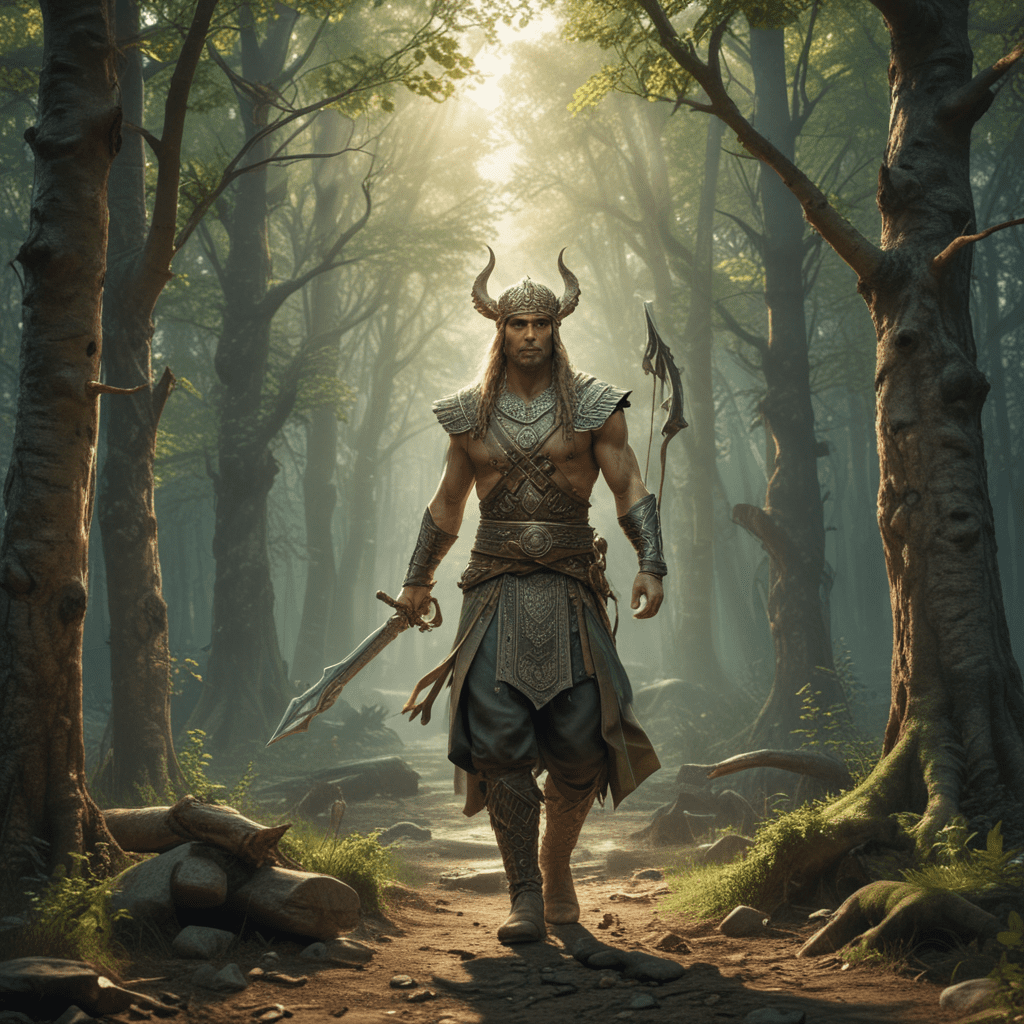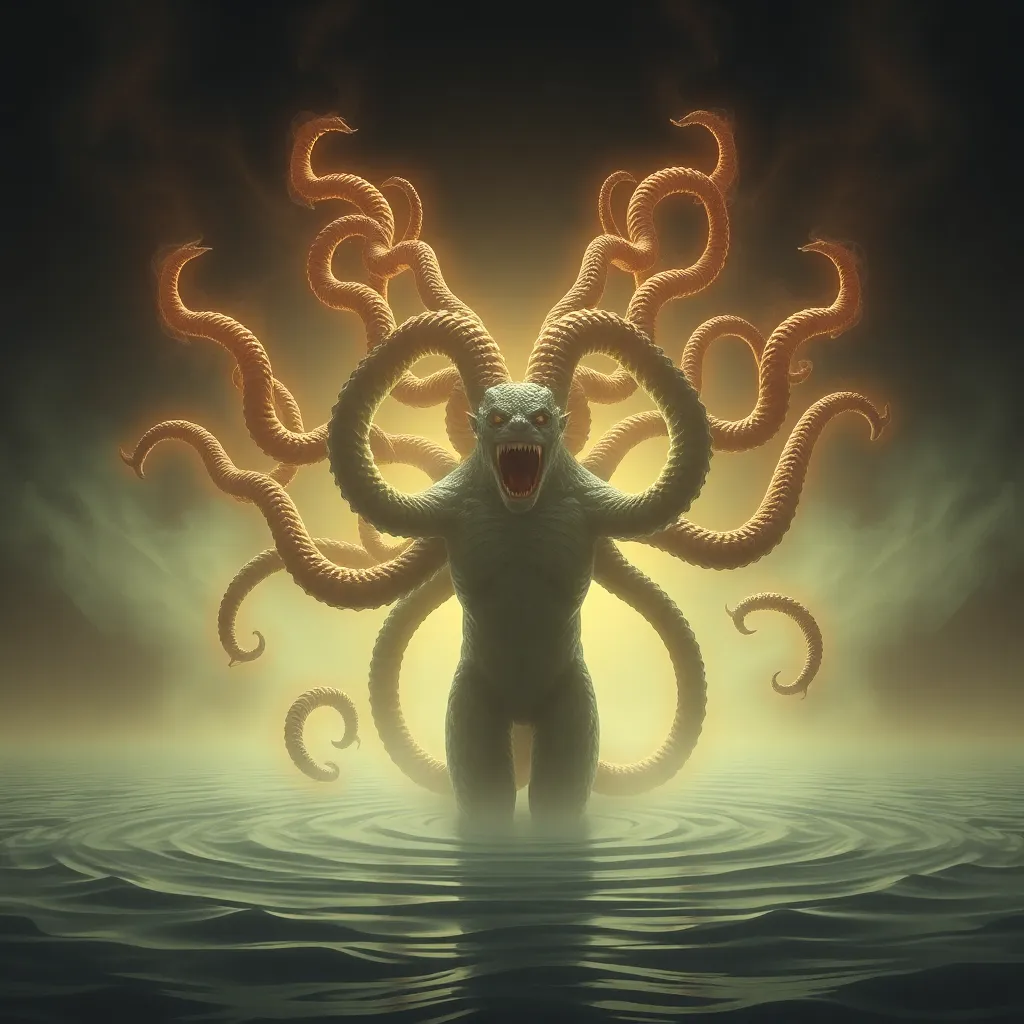The Mythical Rogue: Cunning and Wit in Slavic Folklore
Slavic mythology is a treasure trove of captivating tales that showcase the cleverness and trickery of its characters. In these stories, cunning and wit are essential tools for survival, as heroes and villains alike navigate a world filled with mythical creatures and supernatural forces. The Slavic pantheon is populated by a colorful cast of tricksters, shapeshifters, and magical beings, each with their own unique brand of deception.
The Trickster God Veles: Master of Deception and Shapeshifting
Veles, the Slavic god of the underworld, cattle, and magic, is renowned for his cunning and mastery of deception. He is a shapeshifter who can take on various forms, including animals and humans, to outwit his opponents. Veles is also a skilled magician, capable of casting illusions and influencing the minds of others. His trickery often serves to protect the weak and humble from the powerful and arrogant.
The Slavic Imp: A Mischievous Spirit of Trickery
The imp, known as "domovoi" in Slavic folklore, is a mischievous household spirit that delights in playing tricks on humans. Imps are known for their ability to hide objects, disrupt sleep, and cause all sorts of minor annoyances. However, they can also be helpful at times, assisting with household chores or protecting the family from harm. Despite their mischievous nature, imps are not inherently evil and can form bonds with humans who treat them with respect.
Water Nymphs and Their Enchanting Deceits
Slavic mythology is filled with tales of water nymphs, beautiful and alluring creatures who inhabit rivers, lakes, and ponds. These nymphs possess the power to enchant humans with their songs and dances, but their beauty hides a deceptive nature. Nymphs often lure unsuspecting travelers to their watery depths, where they drown or are transformed into creatures of the water. Their enchanting songs are a siren's call, drawing victims to their doom.
The Cunning Baba Yaga: A Witch of Wisdom and Deception
Baba Yaga is a enigmatic figure in Slavic folklore, a witch who dwells in a forest hut standing on chicken legs. She is known for her wisdom and magical abilities, but she is also a cunning and deceitful figure. Baba Yaga often tests those who seek her help, subjecting them to difficult tasks and riddles. Her motives are often unclear, and her actions can be both benevolent and malevolent. Those who underestimate her cunning often find themselves ensnared in her web of deception.
6. The Leshy: A Forest Spirit's Sly Tactics
The leshy, a forest spirit in Slavic mythology, is known for his cunning and sly tactics. He is a master of disguise, able to transform himself into trees, animals, or even humans. The leshy delights in misleading travelers who wander into his forest, leading them astray or causing them to get lost. He may also play tricks on hunters, causing their prey to disappear or their arrows to miss their mark. Despite his mischievous nature, the leshy is not inherently evil and can sometimes be helpful to those who respect the forest and its creatures.
7. The Vodyanoy: A Water Demon's Treacherous Games
The vodyanoy is a water demon who inhabits rivers, lakes, and ponds. He is a cunning and treacherous creature, often luring unsuspecting swimmers to their doom. The vodyanoy may appear as an old man, a handsome youth, or even a beautiful woman. He uses his charm and charisma to entice victims into the water, where he drowns them and drags them to his watery lair. The vodyanoy is also known to cause storms and whirlpools, endangering those who travel on water.
8. The Rusalka: A Siren's Enchanting Deception
The rusalka, a Slavic water spirit, is a beautiful and alluring creature who inhabits rivers, lakes, and ponds. She is often depicted as a young woman with long, flowing hair and a diaphanous gown. The rusalka possesses a captivating voice that she uses to enchant those who hear it. When humans are drawn to her, she may lure them into the water, where she drowns them or tickles them to death. The rusalka is a dangerous creature, but she is also a tragic figure, often longing for love and companionship.
##9. Animal Tricksters in Slavic Mythology
Slavic mythology is home to a variety of animal tricksters, each with their own unique skills and abilities. The fox is a cunning and clever creature, often outwitting other animals and humans alike. The hare is a swift and agile trickster, able to escape from danger and outmaneuver its pursuers. The bear is a powerful and formidable trickster, using its strength and intelligence to overcome its opponents. These animal tricksters often play important roles in Slavic tales, adding an element of humor and deception to the stories.
10.
The Battle of Wits: Heroes and Tricksters in Slavic Tales
Slavic mythology is filled with tales of battles of wits between heroes and tricksters. These stories often pit a clever and resourceful hero against a cunning and deceitful trickster. The hero must use all their intelligence and cunning to outsmart the trickster and overcome their obstacles. These tales often explore themes of good versus evil, wisdom versus cunning, and the importance of perseverance and resourcefulness.
FAQ
Q: What is the most common type of trickster in Slavic mythology?
A: The most common type of trickster in Slavic mythology is the imp, a mischievous household spirit that delights in playing tricks on humans.
Q: What is the most dangerous creature in Slavic mythology?
A: The most dangerous creature in Slavic mythology is the vodyanoy, a water demon who inhabits rivers, lakes, and ponds and often lures unsuspecting swimmers to their doom.
Q: Who is the most cunning god in Slavic mythology?
A: The most cunning god in Slavic mythology is Veles, the god of the underworld, cattle, and magic, who is renowned for his ability to deceive and outwit his opponents and shapeshift into various forms.




